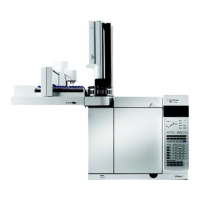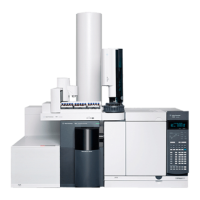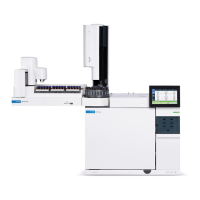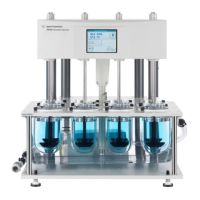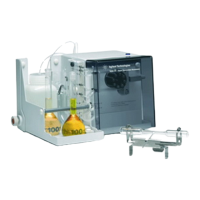Checking for Leaks 7
Agilent 7890 Series Troubleshooting 131
To Check for GC Leaks
Check for leaks at these connections:
• Inlet septum, septum head, liner, split vent trap, split vent
trap line, and purge vent fittings
• Column connections to inlets, detectors, valves, splitters, and
unions
• Fittings from the flow modules to the inlets, detectors, and
valves
• Column adapters
• Agilent capillary flow fittings
First, use the GC’s built-in leak test to check for leaks at the
inlet column fitting, septum, liner, split vent trap line, and so
forth. See “To Perform an Inlet Leak Check”. Correct any leaks
found using this test. If the GC still shows symptoms of a leak,
check the other possible leak points.
If using Agilent Instrument Utilities, you can also use it to
remotely run an inlet leak check (for selected inlet types).
If the inlet passes the inlet leak check but you still suspect a leak
in the inlet, you can use the Instrument Utilities software to
perform a pressure decay test for most inlets. (You can also
perform a manual pressure decay test on any inlet.) Any inlet
that passes the inlet pressure decay test can be considered leak
free.
• To Perform a SS Pressure Decay Leak Test
• To Perform a MMI Pressure Decay Test
• To Perform a PP Pressure Decay Leak Test
• To Perform a COC Pressure Decay Leak Test
• To Perform a PTV Pressure Decay Test
• To Perform a VI Pressure Decay Test
Use an electronic leak detector to check column connections
and tubing connections. See also:
• To Check for Leaks in a Split/Splitless Inlet
• To Check for Leaks in a Multimode Inlet
• Leaks in Capillary Flow Fittings

